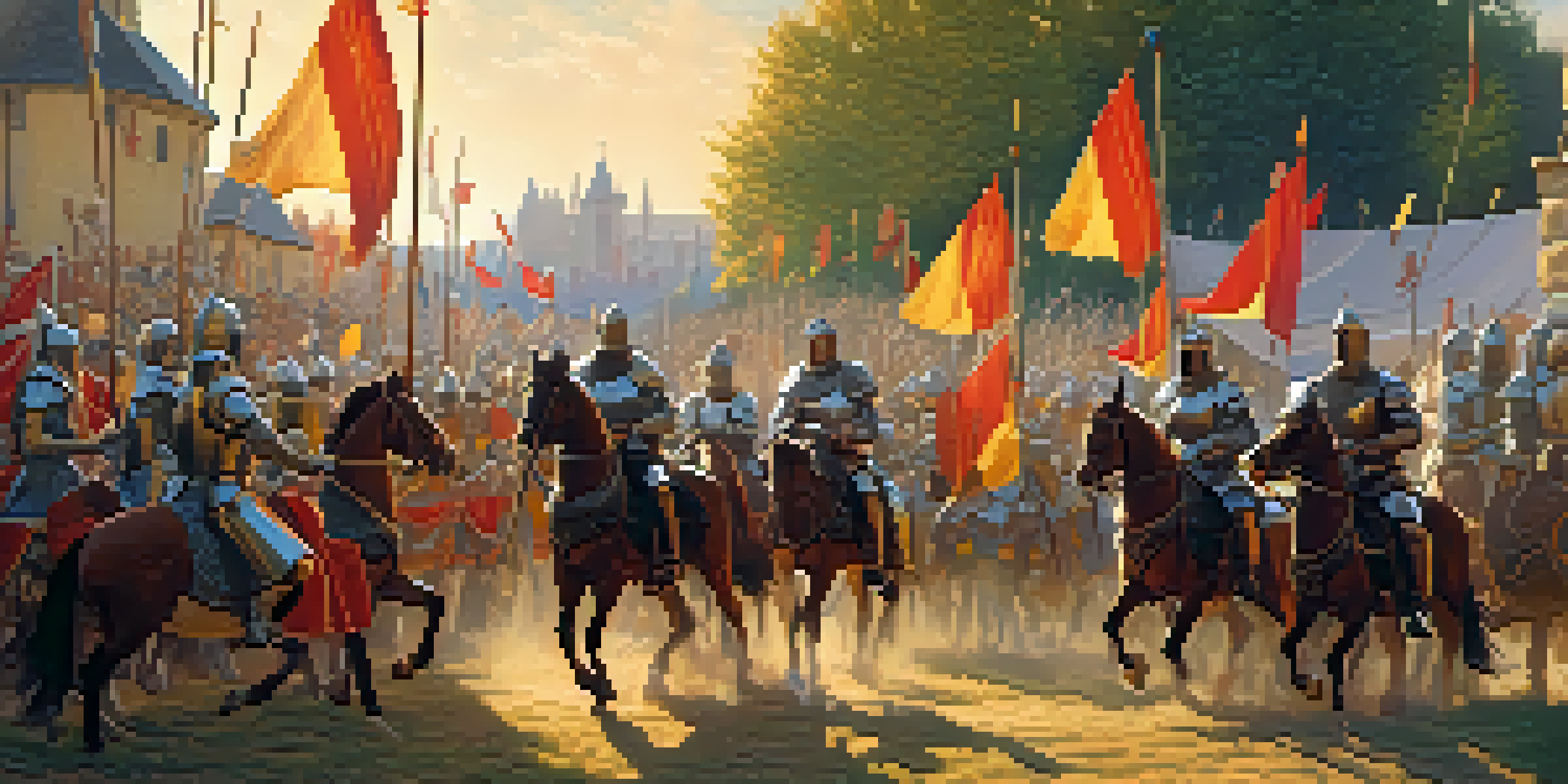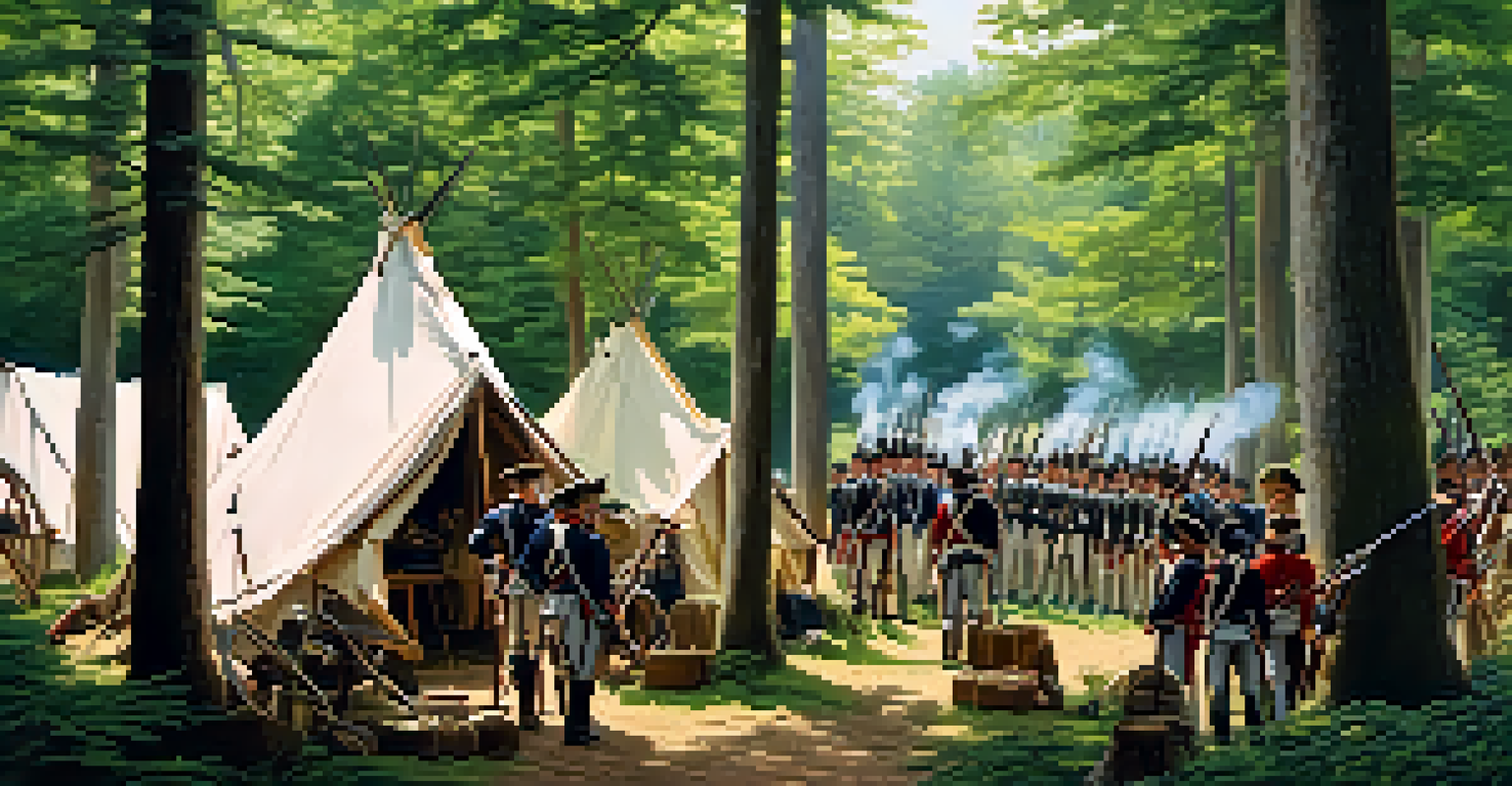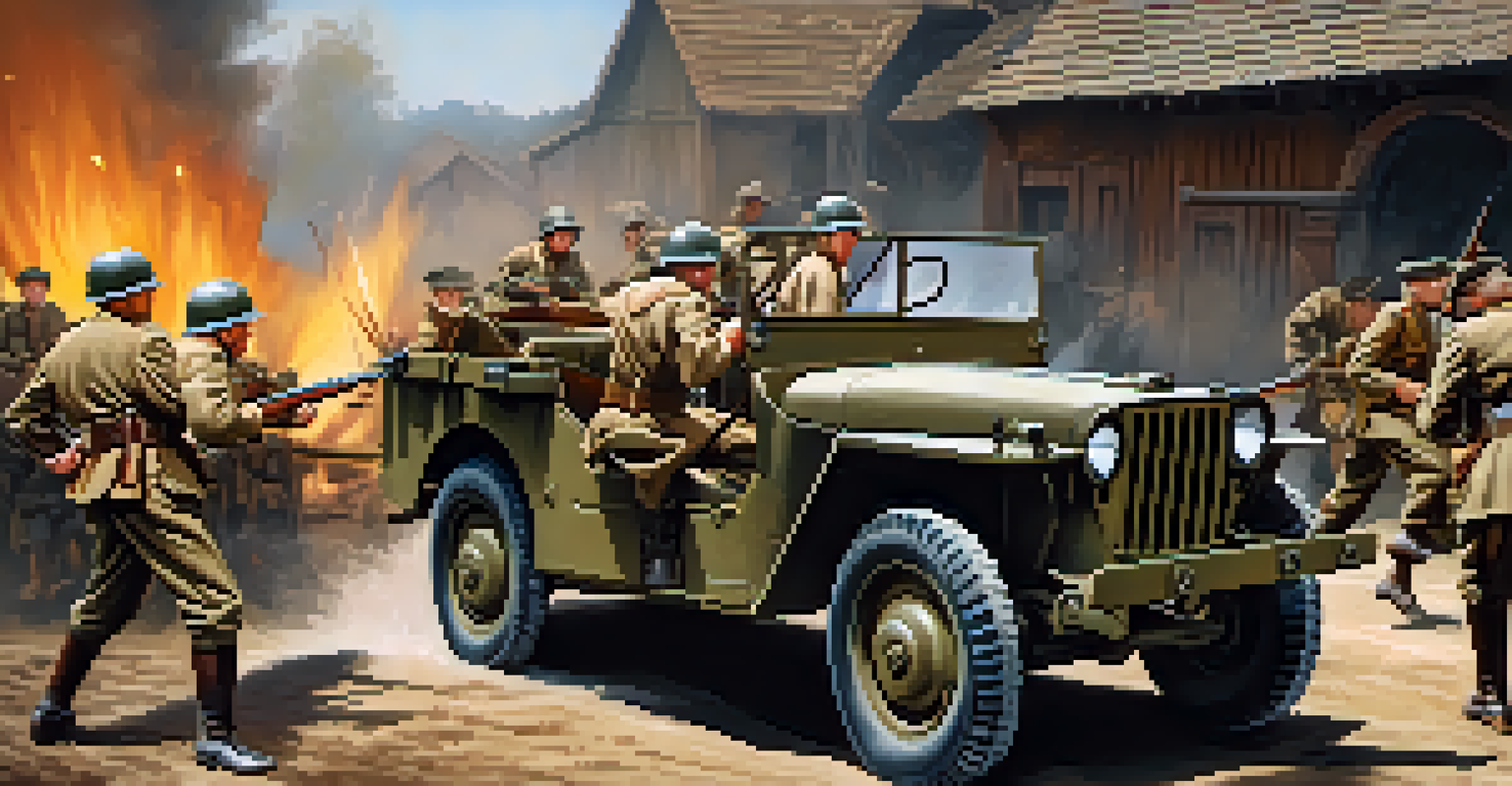The Role of Historical Reenactments in Cultural Education

Understanding Historical Reenactments: An Overview
Historical reenactments are immersive performances that recreate significant events from the past. They often involve participants dressing in period-appropriate costumes and using historically accurate props to bring history to life. By stepping into the shoes of historical figures, reenactors provide audiences with a unique glimpse into different eras, making history tangible and relatable.
History is not a burden on the memory but an illumination of the soul.
These events can range from large-scale festivals showcasing battles to smaller gatherings focused on daily life in different time periods. The goal is to engage the audience in a way that traditional education methods might not achieve. Whether it's a medieval jousting tournament or a Revolutionary War encampment, these experiences invite curiosity and spark interest in historical narratives.
In essence, historical reenactments serve as a bridge connecting the past with the present. They create opportunities for dialogue about historical events, allowing participants and spectators to explore complex themes such as conflict, culture, and community. This hands-on approach to learning often leaves a lasting impact, encouraging deeper exploration of history.
The Educational Benefits of Engaging with History
One of the most significant benefits of historical reenactments is their ability to enhance educational outcomes. Participants often retain information better when they can visualize and experience it firsthand. For instance, a student who participates in a reenactment of a Civil War battle is likely to remember the details of the conflict more vividly than if they had merely read about it in a textbook.

Moreover, these events foster critical thinking skills as participants analyze historical contexts and decisions made by figures from the past. This active engagement encourages individuals to question and understand the motives behind those decisions, fostering a deeper appreciation for history's complexities. It's not just about memorizing dates; it's about understanding narratives.
Engaging Learning Through Experience
Historical reenactments enhance educational outcomes by allowing participants to visualize and experience history firsthand.
Additionally, reenactments often incorporate discussions and workshops that further reinforce learning. By combining performance with educational activities, participants gain a multi-faceted understanding of history, making it more relevant to contemporary issues. This holistic approach is vital in cultivating informed citizens who can critically evaluate both past and present.
Fostering Community Engagement Through Reenactments
Historical reenactments can also play a pivotal role in building community connections. These events often bring together diverse groups of people who share a common interest in history, creating a sense of belonging and camaraderie. Whether participants are local history buffs or tourists, the shared experience fosters relationships that might not develop otherwise.
The more you know about your history, the more liberated you are.
Communities often take pride in hosting reenactments, viewing them as a way to celebrate their heritage. Such events can stimulate local economies by attracting visitors, encouraging them to explore museums, shops, and restaurants in the area. This economic boost, combined with cultural enrichment, can be a win-win for communities looking to preserve their history while promoting growth.
Furthermore, reenactments can serve as a platform for discussing contemporary issues through the lens of history. By examining past events and their outcomes, communities can engage in conversations about current social, political, and economic challenges. This dialogue can be a powerful tool for social change, allowing communities to learn from history as they navigate the present.
Encouraging Empathy Through Historical Perspectives
One of the more profound impacts of historical reenactments is their ability to foster empathy. By portraying individuals from different backgrounds and eras, participants can gain insight into the lives and struggles of those who came before them. This empathetic understanding is crucial in a world where cultural differences often lead to conflict.
For example, a reenactor portraying a soldier in a historical battle might share personal stories or letters that reveal the human experience behind warfare. This perspective shifts the focus from abstract statistics to the real emotions and decisions faced by individuals. Audiences are invited to walk a mile in someone else's shoes, fostering a greater appreciation for diverse experiences.
Building Community Connections
These events foster community engagement by bringing together diverse groups and stimulating local economies through shared historical interests.
Additionally, reenactments can highlight marginalized voices in history that are often overlooked in traditional narratives. By bringing these stories to the forefront, participants contribute to a more inclusive understanding of history. This awareness not only enriches the reenactment experience but also encourages ongoing discussions about representation and equity in historical storytelling.
Preserving History: A Living Archive
Historical reenactments act as living archives, preserving knowledge and traditions that might otherwise be forgotten. Through meticulous research and preparation, reenactors ensure that the details of different time periods are accurately represented. This dedication to authenticity enriches the educational experience for all involved.
Moreover, as culture evolves, these reenactments adapt to reflect contemporary values and understandings. This fluidity allows history to remain relevant, as new interpretations emerge and are incorporated into performances. It’s a dynamic process that keeps history alive, rather than allowing it to become static or irrelevant.
By participating in or attending reenactments, individuals contribute to the preservation of cultural heritage. Each event becomes an opportunity to celebrate and reflect on the past, ensuring that future generations understand where they come from. In this way, reenactments serve not just as entertainment, but as vital cultural practices that honor and preserve history.
Challenges in Historical Reenactments
While historical reenactments offer numerous benefits, they also face challenges that need to be addressed. One significant issue is the potential for inaccuracy or oversimplification of historical events. When participants are not diligent about researching their roles, it can lead to the spread of misconceptions about the past.
Additionally, the portrayal of certain events may unintentionally reinforce stereotypes or biases. It's crucial for reenactors to approach their roles with sensitivity and a commitment to inclusivity. This responsibility extends to event organizers as well, who should aim to create a respectful environment that acknowledges the complexities of history.
Fostering Empathy and Inclusion
Reenactments promote empathy by allowing participants to embody diverse historical perspectives, highlighting often-overlooked narratives.
Furthermore, there is the challenge of balancing entertainment with education. While many people are drawn to reenactments for the spectacle, it’s essential that the educational aspect is not overshadowed. Striking this balance is vital in ensuring that participants and audiences walk away with a deeper understanding of the historical context behind the performances.
The Future of Historical Reenactments in Education
As we look to the future, the role of historical reenactments in education is likely to evolve. With advancements in technology, we may see the integration of virtual reality and augmented reality experiences that further enhance immersion. Imagine donning VR goggles to experience a historical event from the perspective of a participant—it’s an exciting possibility that could transform learning.
Moreover, the rise of social media offers new platforms for sharing reenactment experiences and educating a broader audience. By using digital storytelling methods, reenactors can reach people who may not have the opportunity to attend live events. This accessibility could foster a greater appreciation for history among younger generations, who are often more engaged with technology.

Ultimately, the future of historical reenactments in education will require collaboration among educators, historians, and reenactors. By working together, they can create innovative programs that make history engaging, relevant, and inclusive. This collaborative spirit will ensure that historical reenactments continue to play a vital role in cultural education for years to come.